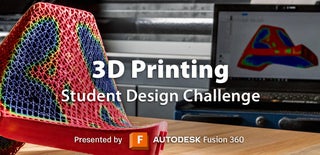Introduction: 3D Printed RC Hovercraft (IPACV-3D)
IPACV-3D Information:
The RC Hovercraft is an incredibly enjoyable vehicle to operate, offering exceptional maneuverability and easy handling. Its design is unique in that it utilizes an impeller to hover, rather than the typical counterrotating ducted fans, which can result in a bulky and strange looking hovercraft. The IPACV-3D, on the other hand, boasts a sleek and modern design that is both attractive and functional. One impressive feature of the hovercraft is its ability to lift three times its own weight, despite weighing only 1.005kg (2.2lbs). At full throttle, it can lift up to 2.267kg (5lbs) in addition to its own weight. Therefore, it has a total lifting capacity of approximately 3.35kg (7.3lbs), which is truly remarkable. The IPACV-3D hovercraft can be easily modified to accommodate larger batteries, motors, and other enhancements, making it an excellent choice for those who enjoy customization.
The IPACV-3D Hovercraft was specifically designed to fit on a 220x220mm bed, ensuring that anyone can easily print the model. All parts were printed using a .6mm nozzle, with varying layer heights of .28-.4mm. Although the parts are not overly complicated, they do require a significant amount of print time. In total, it took approximately 120-130 hours to print all the necessary components, including test prints and failed attempts. However, under ideal conditions, the entire printing process should take around 55 hours.
This entire hovercraft was printed on an Ender 3 V2. To hold the parts together I used metric bolts along with glue to ensure maximum strength. If you have any questions whatsoever about the IPACV-3D feel free to message me and ask any questions.
The FPV camera mount firmly clips onto the main arm and is adjustable to any size FPV camera. You can design your own mount differently if you would like but I always find something simple like this with Velcro works great.
Print Files:
The files can be found on etsy: https://www.etsy.com/listing/1672428228/3d-printed-rc-hovercraft
Me
I am in 11th grade enrolled in an online high school, (Excel Online High School).
I used Fusion360 for this entire design process, which can be seen in the design time lapse.
IPACV-3D Design Process:
The IPACV-3D (Impeller Powered Air Cushion Vehicle) is a 3D-printed RC hovercraft that I designed at only 16 years old. It was a challenging and time-consuming process that required a lot of research and experimentation.
When I first started, I knew very little about hovercrafts, but over the course of eight months, I was able to design and refine my own model. Balancing my schoolwork and other extracurricular activities made it difficult to find the time to work on it, but I was determined to see it through.
Supplies
Attachments
Step 1: Overview
The assembly of the hovercraft is not super easy. First it takes hours of printing out parts. Secondly, it is not buttery smooth to put this together. However once put together this Hovercraft works amazing! It is so fun to drive around.
The Assembly is all documented in the video down below in the ASSEMBLY Step.
It is easy to follow along. However, if you have any questions whatsoever email me at digitalforge3d1@gmail.com
If there seems to be common questions on assembly I will upload the answers here on Instructables.
Files
All the design files can be found at these different links ready to download:
https://www.etsy.com/listing/1672428228/3d-printed-rc-hovercraft
Step 2: 3D Printing
The very first step is to 3D print all of the parts. Unfortunately I was not able to record any of this process, however it is fairly straight forward. Here is some important information to keep in mind when printing:
- The Impeller should be printed in Light Weight PLA to reduce the stress on the motor when accelerating
- All other parts can be printed in PLA
- The Propeller must be printed laying flat to ensure maximum strength.
- The Printing process can be tedious and it takes a lot of time!
Once all of the parts are printed proceed to the next step
Step 3: Assembly
Note: The assembly process is very well documented in this assembly video. I recommend following it closely.
Materials needed for assembly:
- The proper amount of bolts. Link in Materials PDF
- Strong Glue to glue to main halves together
Wiring on Next Step
Step 4: Wiring
As seen in the image the wiring is a rat's nest. Unfortunately due to the sheer size of the esc's and receiver it is hard to fit all of the wiring inside of the small cargo bay, however it is doable
- The Wires need to be shortened in order to fit everything inside the cargo bay. This can easily be done with a soldering iron and some shrinker wrap. However this step is crucial
- In the Assembly video above I show how to route all of the wires. I recommend watching the video
Step 5: Final Product
The IPACV-3D can take a while to build. It is a fully functioning design however it is not fully streamlined and you can expect some issues with it. However you will also find that it is very enjoyable to drive (or hover) around.
If you have any questions please ask me at digitalforge3d1@gmail.com
Common Questions:
How do I build and attach the skirt?
I included a template for the skirt however it isn't of much help. I would recommend tracing the bottom of the the hovercraft onto a trash bag or nylon sheet (the material you use for the skirt) and then offset that by 20cm and then cut if out. Note: Be sure to trace the inside of the bottom of the hovercraft.
The skirt then easily attaches to the hovercraft using the small clips. I would recommend using quite a few

Participated in the
3D Printing Student Design Challenge














